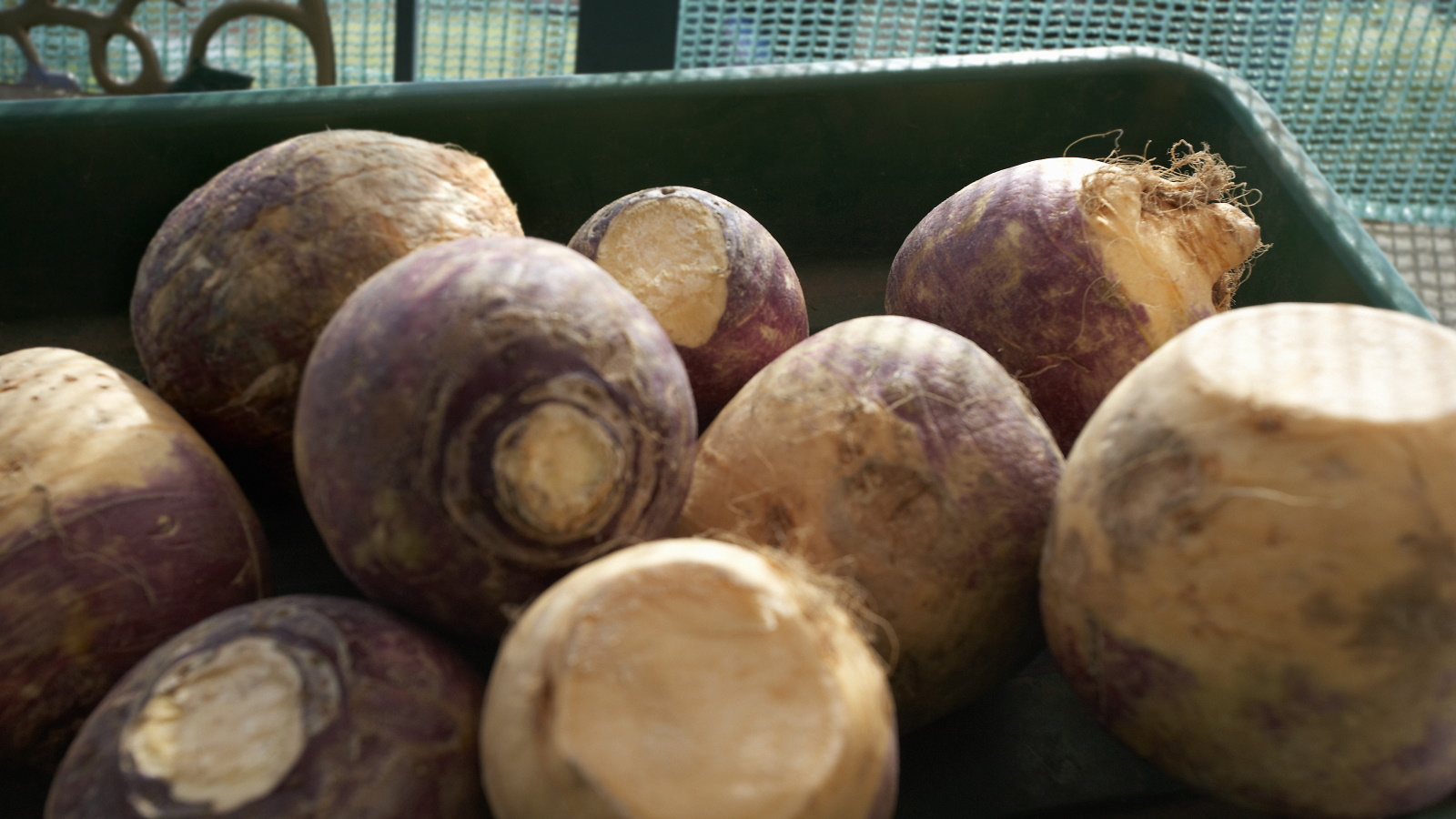
Rutabaga is a brassica crop grown for the large oval bulb it produces. It has a sweet and earthy taste and the bulbs are highly nutritious, with lots of vitamins and antioxidants.
The crop can be harvested throughout summer and fall. You want to harvest rutabaga at the right time as this avoids the root getting woody and bitter. When it comes to flavor, timing is key and, when growing rutabaga in fall, it can be improved by a few touches of frost.
Rutabaga is a crop I grew annually for chefs working as a professional kitchen gardener in the UK. The roots were lifted at their peak and delivered to restaurants for use in dishes. It was important to harvest rutabaga at the right time, before the flavor diminished - and carefully, to avoid any crops getting damaged.
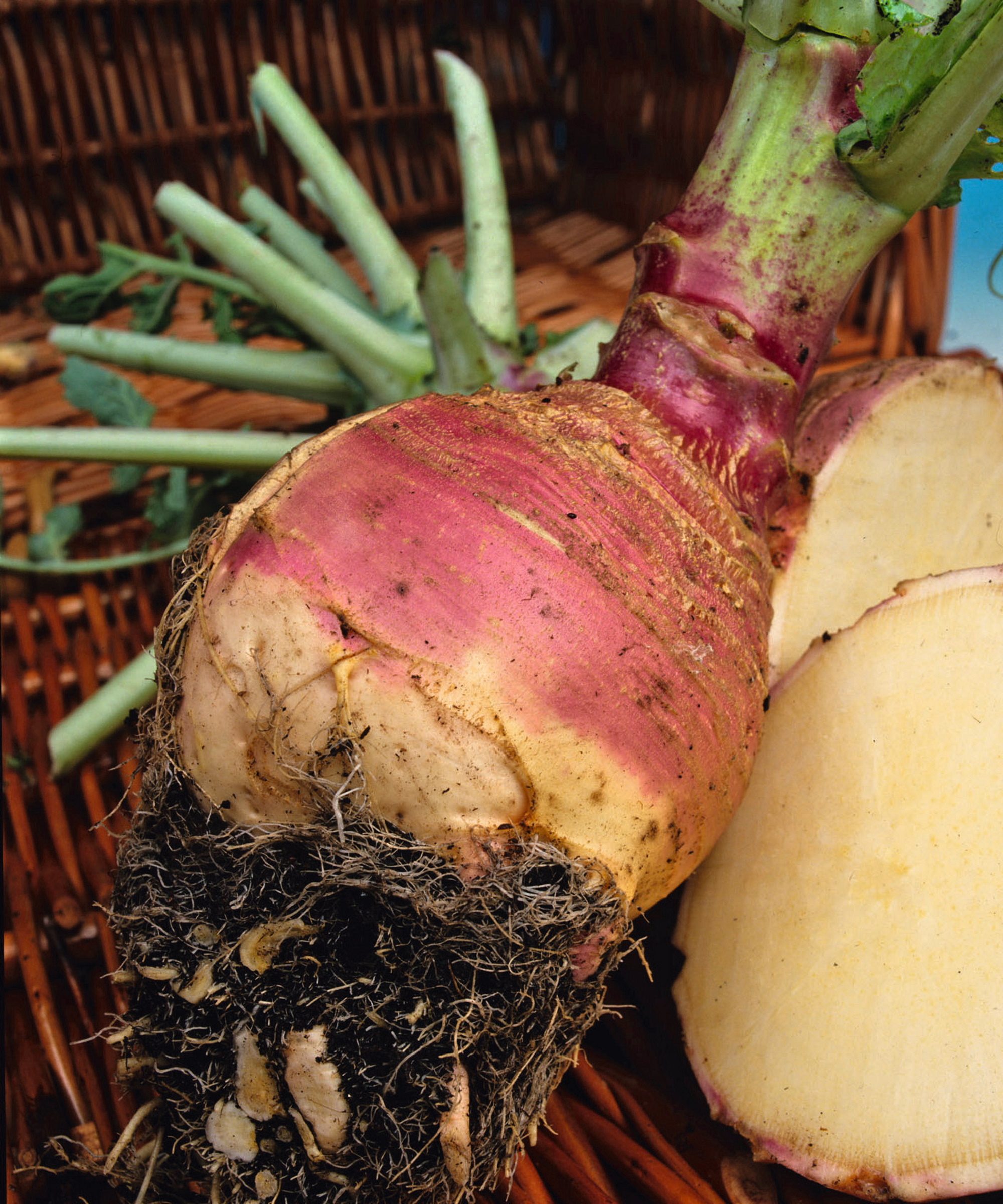
How to know when to harvest rutabaga
I have harvested many rutabaga over the years and learnt the importance of keeping a close eye on the size and lifting them properly. Here are a few lessons I have picked up, with extra advice from some experienced vegetable growers, to help you get a premium harvest of rutabaga.
When to harvest rutabaga
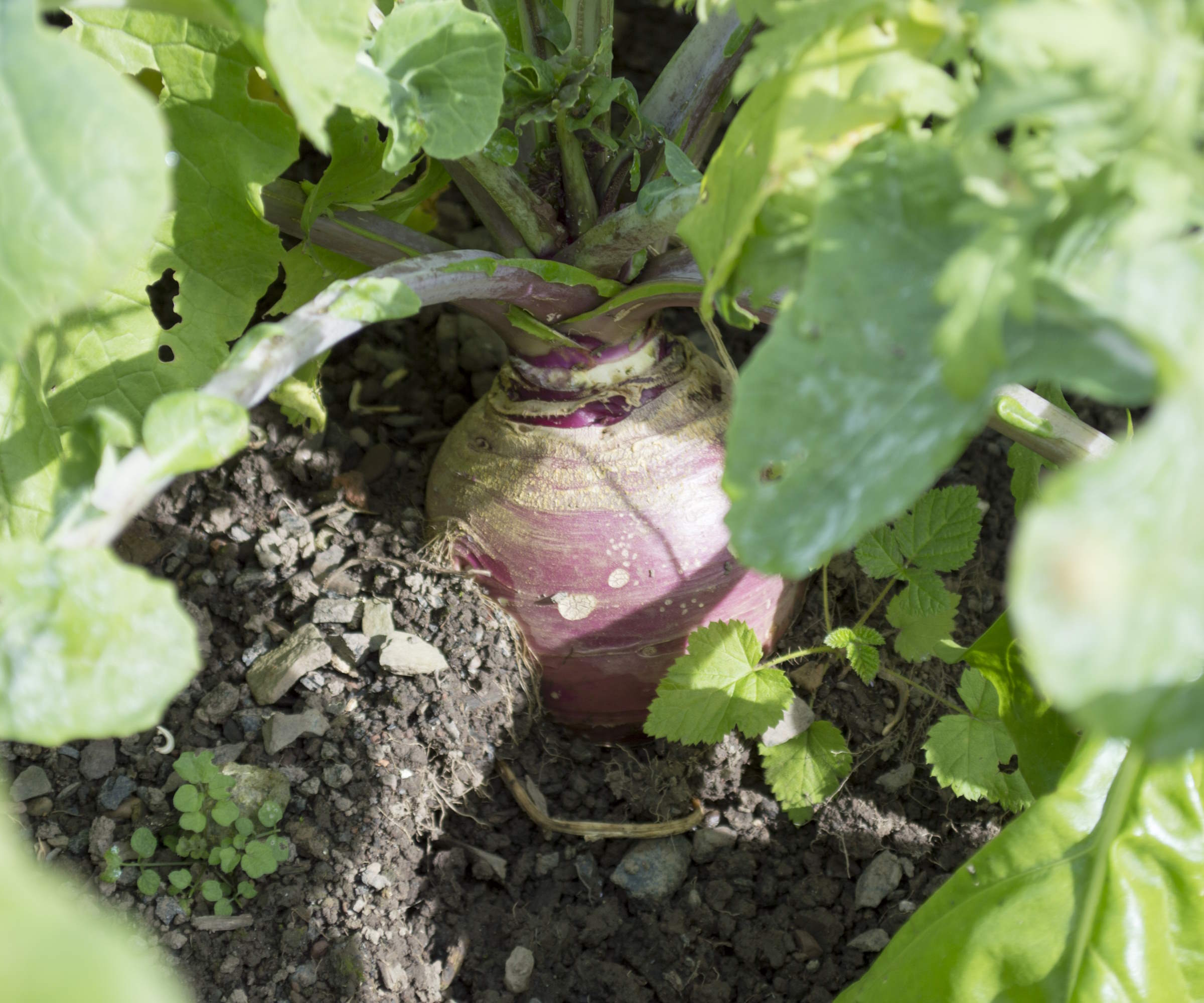
Rutabaga are vegetables that can be planted in spring or summer. Planting the vegetable in May can give you a summer crop while a sowing in summer means a second harvest come fall.
To ensure a good harvest, keep plants well-watered as stress from a lack of watering can make the rutabaga woody and bitter.
Katie Burdett, garden expert and owner of Growing With Gertie, also advises to ‘cover rutabaga with insect netting or row cover to prevent insect damage from cabbage moths and armyworms’ that can impact your potential yield.
Rutabaga takes around 90-110 days to go from sowing to maturity and the size of their tops is usually the main marker they are ready to harvest.
The roots can be lifted as smaller and sweeter rutabaga when they are 2-3 inches in diameter, however, waiting till the plants fully mature and reach 3-5 inches gives you rutabaga with a milder flavor and a longer storage life. Leaving the crop to develop past this size would be a harvesting mistake, as older rutabaga will get tough and bitter.
Rutabaga can be harvested when required throughout summer and fall. Crystal Jarvis, garden consultant at Lettuce Grow Something, recommends that late-season rutabaga ‘taste the sweetest if harvested after a couple of frosty nights’ in fall.
The roots can be protected from light frosts by being mulched with a layer of straw to extend the harvesting season. However, the roots do need to be lifted ahead of heavy frosts and the risk of the soil freezing.
You can also harvest rutabaga greens, the foliage on the top of the plant, throughout the season. The greens can be cut once they have reached 3-4 inches in length, however, do not cut too many leaves in one go, as this will affect the development of the root, and the greens will regrow providing the top of the bulb isn’t damaged.
How to harvest rutabaga
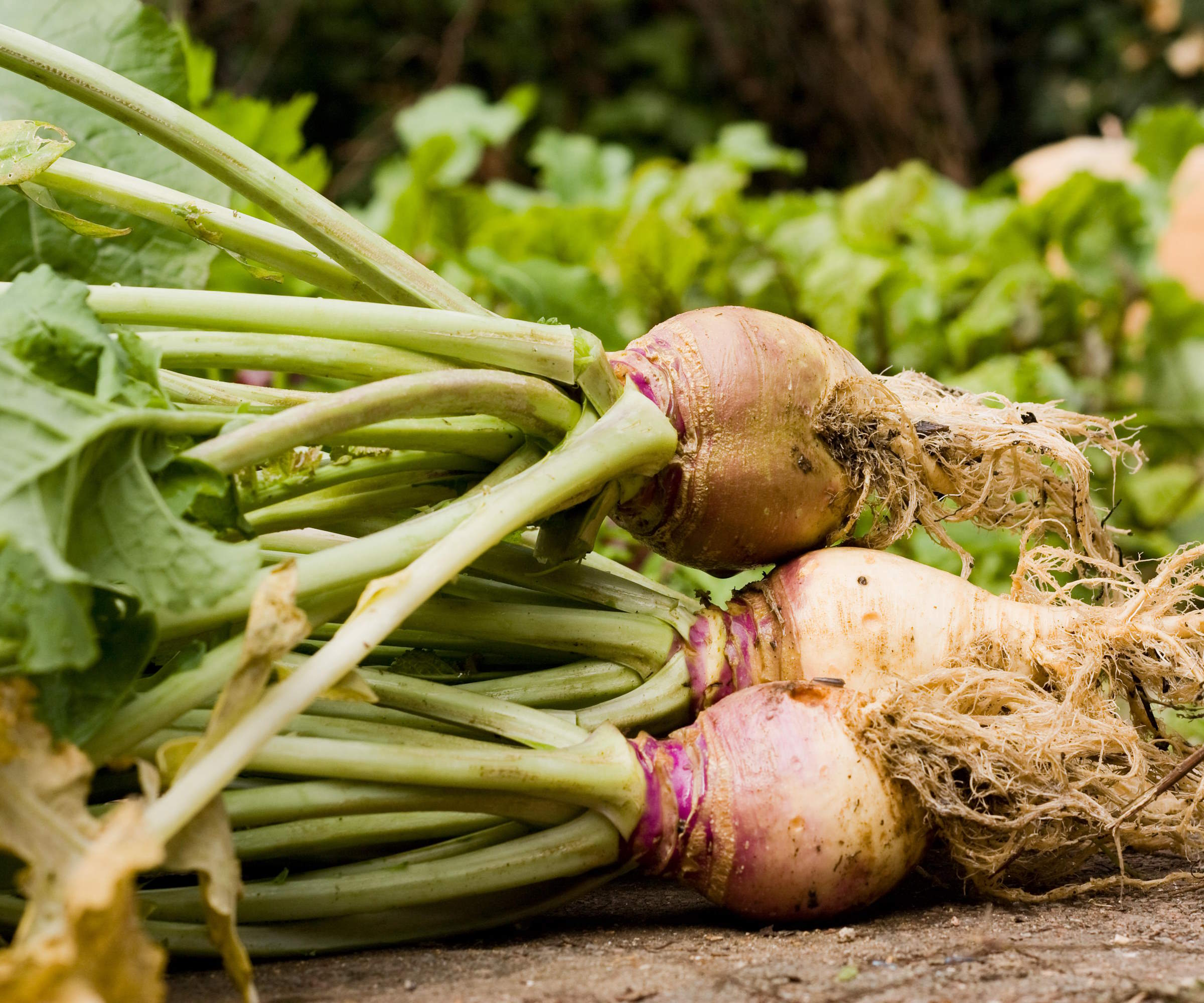
The task of harvesting rutabaga is very simple. It can sometimes be done carefully by hand, however, in some circumstances, lifting the roots can be made easier with some common garden tools.
‘To harvest, gently pull up the rutabagas from the soil,’ advises Crystal Jarvis. ‘If the soil is too compacted then take a spade or hori-hori knife to loosen it up around the rutabaga before pulling. Take care to not nick or bruise the plant for the best storage life.’
I would also recommend using a garden fork, spade, or knife to help loosen the soil when harvesting. This eliminates the risk of damaging or breaking the roots, which can happen if you pull too hard with your hands. Take care not to damage other nearby rutabaga when harvesting.
Rutabaga leaves can be cut from the plant using clean and sharp pruning shears or a knife once they reach a usable size throughout the season. Cut around an inch above the crown and pay close attention to avoid nicking or damaging the root when cutting the leaves.
Shop harvesting tools
This innovative tool takes a classic hori hori to the next level with 10 unique functions and a heavy duty case that clips right to your belt.
Harvesting knife featuring steel blade with flat tip and partially serrated saw teeth designed for a variety of lawn, backyard, outdoor, and farming tasks.
A heavy-duty garden fork with an overall length of 45 inches and a weight of 4.5 lbs. Perfect for a wide variety of gardening tasks.
How to store rutabaga
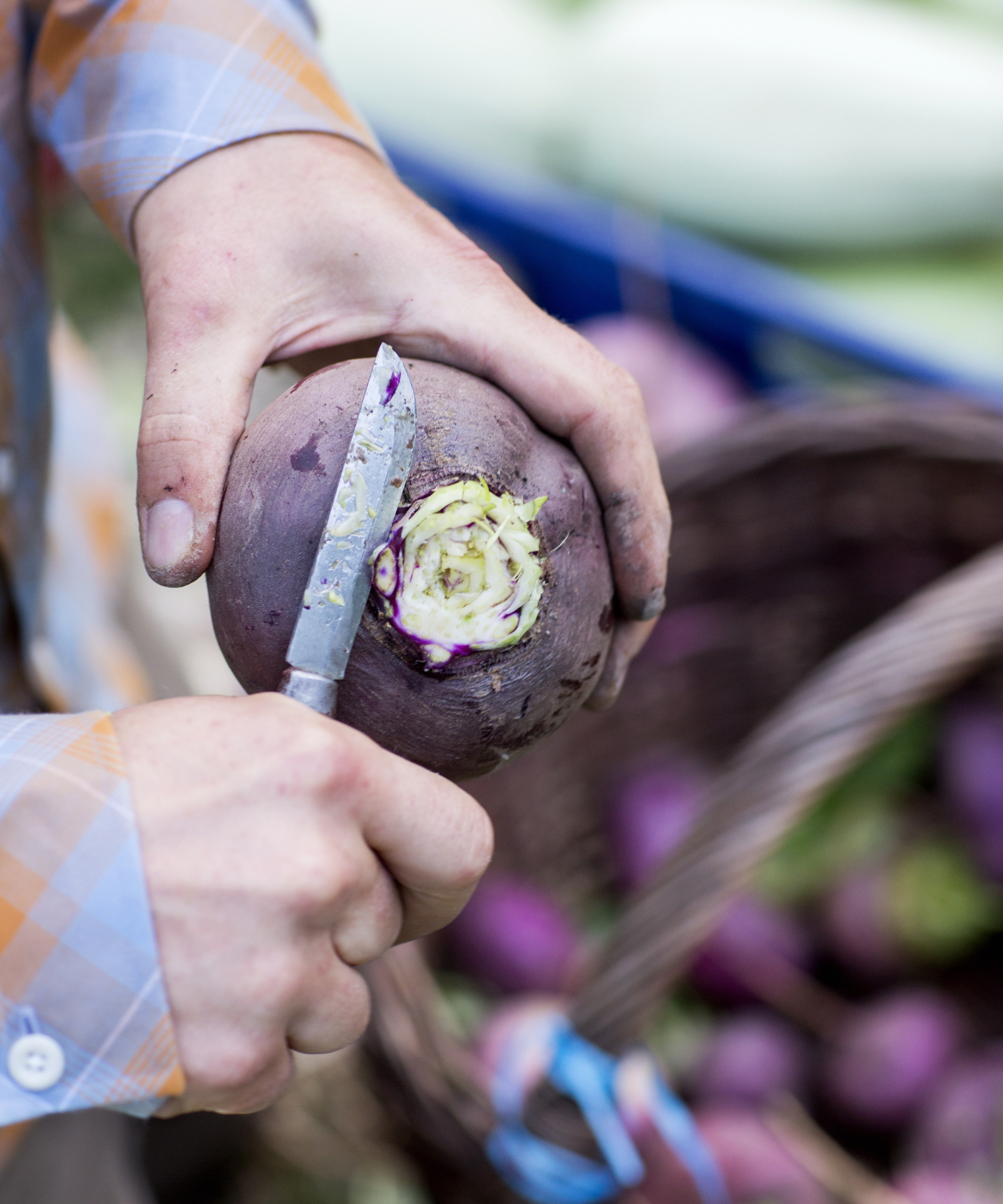
Katie Burdett recommends ‘store the root of the rutabaga separately from the greens for the best storage life’. Remove the greens from the root by cutting with a knife or pruning shears, or simply twist off the greens, immediately after lifting the rutabaga. These greens can still be used in cooking.
Inspect your harvested rutabaga and use any bruised or damaged roots first, as these will not store well. Remove excess dirt off each rutabaga, but do not wash the roots as this can leave them susceptible to rot or mildew during storage.
Store rutabaga in a dark and cool place at temperatures of 32-35°F. A high humidity of 90-95% can also prevent the roots from shrivelling. An ideal place to store rutabaga is a refrigerator and, in ideal conditions, the crop can be kept for around four months. A root cellar, cold shed, or garage can be used for larger harvests.
How to harvest rutabaga seeds
Rutabaga is a biennial crop that flowers and sets seed in its second season. In warmer climates, plants can be overwintered outdoors to go to seed the following year. Growers in colder US hardiness zones may need to lift and store the roots to replant the following spring once the frosts have ended.
The plants will flower come early summer and the resulting free seeds need to be left to mature on the plant to be collected and stored to sow the following year.
Brassica plants can cross-pollinate within their species. It means that rutabaga can cross-pollinate with other Brassica napus, which includes some kales, so planning must be done to avoid growing related crops close together if you want to collect seeds.
FAQs
Can you leave rutabaga in the ground?
Rutabaga may be left in the vegetable garden through winter, though it will depend on the climate. Growers in colder regions need to lift the roots before the hard frosts arrive, however, those in warmer climates may be able to overwinter the vegetable outdoors and be harvested throughout the season. The rutabaga will have to be lifted in spring before the biennial starts growing again.
Is rutabaga edible raw?
Rutabaga can be eaten raw or cooked. The skin and flesh can be eaten raw, though the skin can be tough, and the vegetable is often grated and added to salads.
Can you eat rutabaga leaves raw?
Rutabaga greens can be eaten raw and added to salads to add an earthy and sweet flavor. Larger rutabaga leaves can be tough but are delicious sautéed, steamed, or added to soups or stews.
Rutabaga are popular crops in Christmas dinners and, in the right conditions, can be kept in the ground ready to harvest for the festive season. If you want to try to grow your own Christmas dinner, other hardy brassicas such as Brussels sprouts, broccoli, and cabbages can be grown through summer and fall, to be harvested in December for homegrown festive dinner plates.







